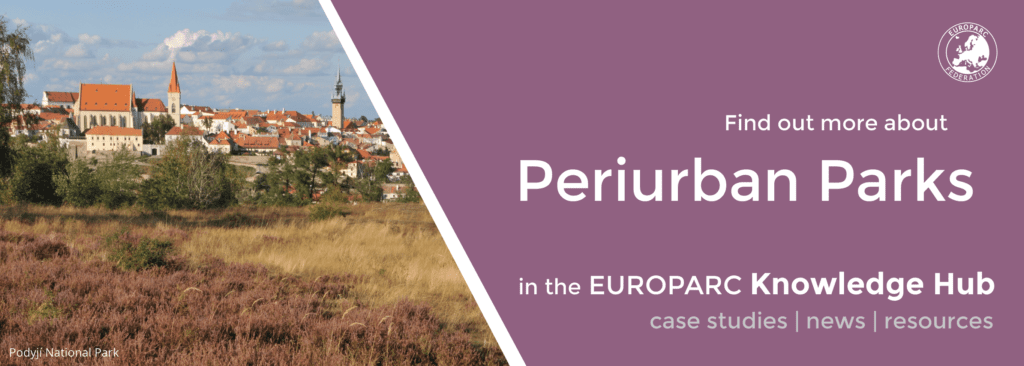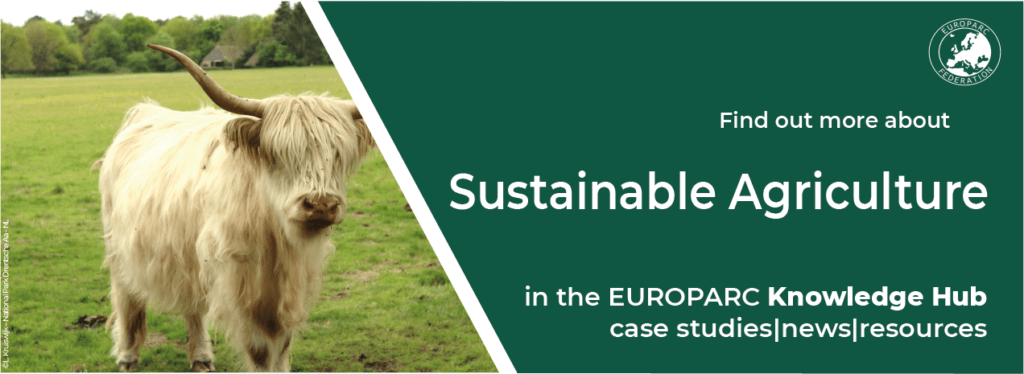Happy birthday, LIFE ENABLE!
Happy birthday, LIFE ENABLE
Happy birthday to LIFE ENABLE! Just over 1 year ago, the project held its kick-off meeting. A lot has happened in the last 12 months – here are some highlights!
We had our first face-to-face technical meeting in Marseille 6 to 8 April and our project workshop in the EUROPARC Conference in Austria May 2022.
The new European Nature Academy is taking form. This training hub will be the main gateway to the tailor-made courses and networking events being produced through the project.
All of the competence-based blended learning courses are now well ‘under construction’. There are 4 courses:
- Ways of working for Natura 2000 & Protected Areas across Europe. This course starts with a ‘live’ Induction Seminar in February 2023 and will be delivered in 10 online modules from March to June next year. Subjects covered include: European policies & priorities for nature; tools for participative & inclusive governance; design of communication strategies, tools and techniques; management planning as technical and social processes.
- Two courses for Forest and Marine managers to be delivered in September 2023. Both these courses will include a practical ‘on site’ workshop.
- A Train the Trainers course where 20 people will be trained to train their peers and colleagues in the courses they have themselves completed.
The training is cost-free and travel and subsistence costs to participate in the networking events will be reimbursed by the project.
Our marine and forest experts met in June this year. They are contributing to the development of marine and forest courses.
More than 25 videos have been scripted, filmed and are now in the editing phase.
And we are ready to open the call for applicants from 5 October 2022! In the first phase, 60 ‘core participants’ will be selected. The deadline to apply is 4 November 2022 and selected participants will be confirmed before the end of this year.
We anticipate a high demand – so, if you are ‘ready to be enabled’, we will welcome your application!
If you would like to get a deeper look into everything related to the LIFE ENABLE project, you can find out more in our newly published LIFE ENABLE newsletter available here!
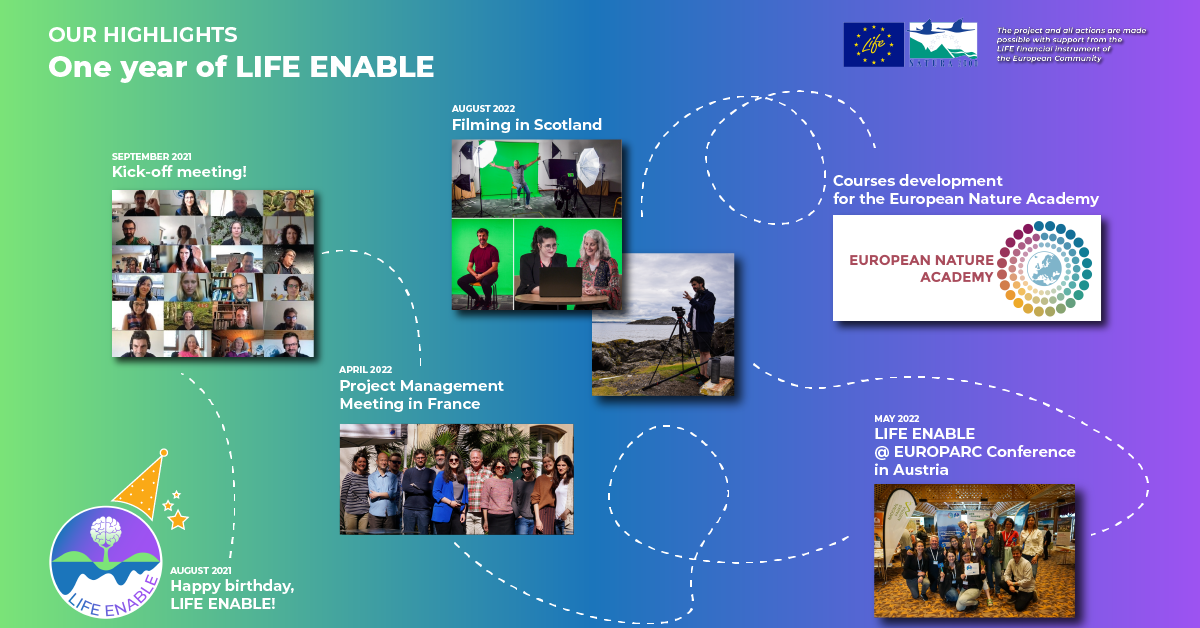
Happy birthday, LIFE ENABLE
If you want to get all the insights and exclusive information about the LIFE ENABLE project, make sure to subscribe to our newsletter, so you don’t miss any important updates!
Exploring how Periurban Parks engage Urban Audiences
Guided visit at Sas Hegy nature reserve, on the edge of Budapest © Matthew Ross
Every year, the Alfred Toepfer Natural Heritage Scholarship supports the work of young conservationists in Protected Areas across Europe. Matthew Ross, learning and discovery ranger at the Peak District National Park, was one of the winners of the Scholarship in 2019. He travelled to Scotland and Hungary to learn more about how two Periurban Parks are approaching visitor management and nature education. The following article is written by Matthew. You can download his full report and a special toolkit at the end of the article.
The special case of Periurban Parks
Periurban Parks are a portal to nature connection for millions of people. However, the proximity to urban areas can also bring problems, with large numbers of visitors harming fragile ecosystems. Despite these challenges, there are also wonderful opportunities: we have a huge pool of people, on our doorstep, to inspire about nature! With our help, young people in these urban areas can learn to appreciate our beautiful landscapes and aspire to conserve them.
I work in the U.K’s Peak District National Park. This beautiful area is girdled by the urban areas of Manchester, Sheffield, Derby and Stoke; the threat of urban encroachment helped us become the U.K’s first national park. Seventy years later, it is these urban areas which provide a majority of the park’s visitors: millions every year!
My work involves trying to build a deeper connection between our visitors, especially young people, and the landscape. Our team provides outdoor learning experiences for schools, families, and community groups.
I have been very privileged to benefit from an Alfred Toepfer Natural Heritage scholarship, enabling me to travel to two other European national parks close to urban areas. My study aims were:
- To investigate issues caused by large visitor numbers, and how each park is trying to tackle these through engaging visitors.
- Observing engagement techniques used by parks, with a focus on inspiring young people.
- Finding out how national parks enable self-led visitors and remove barriers for less socially mobile groups.
The two parks I chose were:
- Duna-Ipoly Nemzeti Park, close to Hungary’s capital, Budapest.
- Loch Lomond & The Trossachs National Park, just outside Glasgow, Scotland.
Engaging visitors of the Parks
In each park I met staff, visited key interpretation sites and observed education sessions and events in action. It was very instructive to find parallels between our different national parks. Despite our different contexts, many of the issues we face are similar: antisocial behaviour, wildfires, traffic congestion and impacts from outdoor pursuits. These are made more severe by the volume of visitors from urban areas.
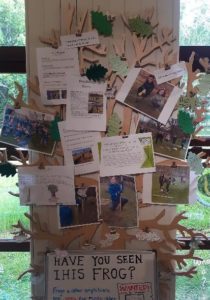
Display celebrating young people’s conservation, Loch Lomond © Matthew Ross
All three parks recognise that direct engagement offers a way, perhaps the best way, to communicate about these issues. Education sessions can provide direct care messages to audiences about environmental issues, helping to prevent problems and inspire positive action. Beyond the immediate benefits, all three parks are “playing the long game”, trying to inspire a love of nature that will filter through generations to forge a long-lasting stewardship of these landscapes.
Young people are particularly key to this. Engaging them and providing “Eureka!” moments that connect them with nature can encourage a lifetime of learning about, and caring for, our environment.
School visits, family events and activity trails all provide great ways of enabling this. Activities that allow young people to have their own, close-up connections with nature, such as pond dipping and ‘Bio-blitzes’ are especially valuable, and all three parks make this a key feature of their work. Nature play, with mud, sticks, and water is great, too!
There are also opportunities for promoting positive action through conservation. In Loch Lomond NP, junior rangers groups run in local schools, and I observed students removing invasive species from a local nature reserve. Photos and reflections from children taking part in conservation tasks are collected and displayed in the park’s visitor centre; this creates pride in their actions and helps to inspire other visitors.
Creating easy access to the Parks
Although the urban population are very closely situated to our national parks, many of them have barriers to visiting. Traditionally, our demographics have not reflected the diverse populations of our cities, and we must try to make our parks accessible to all. Loch Lomond & The Trossachs has pioneered an Educational Travel Grant, which helps enable economically disadvantaged schools and communities.
Creating ‘National Park champions’ within local communities can help inspire people to visit, and to do so responsibly. In the Peak District, we are developing community projects and an ‘Ambassador school’ scheme to this end.
Another way of engaging harder-to-reach-groups is meeting them in their local green spaces; the best connections with nature often begin at home, and sometimes these can be useful stepping stones to visiting bigger, wilder landscapes. Duna-Ipoly has pioneered a unique way of doing this: a mobile pond-dipping laboratory that travels around different areas, connecting children with nature (and the environmental issue of water quality) close to their schools.
Accessibility and engagement possibilities for independent visitors are important too. Interpretation boards, activity trails and online resources can all help with this. Duna-Ipoly even has a National Park app.
The above is just a very brief summary of the great work being done in these national parks. Learning from their innovative, inspiring staff has been very valuable, and now I hope to build on this to help my own team engage and innovate more effectively.
I feel very grateful for this opportunity, and would recommend any young people working in protected areas to apply for an Alfred Toepfer Natural Heritage Foundation scholarship.
If you’d like to learn more about some nature connection and engagement techniques, I have put together a small ‘toolkit’ of ideas that can be downloaded here.
Cooperating for Biodiversity: the case of Schiermonnikoog in the Netherlands
In the Netherlands, farmers are protesting the government’s plans to cut nitrogen emissions. This article details the innovative plan created by farmers at Schiermonnikoog that will cut emissions, whilst ensuring the farmers’ livelihoods.
The Nitrogen problem
Agriculture is essential to support human life, but it can also be destructive to nature when practised too intensely. Cattle produced manure, as well as fertilizers, emit high levels of greenhouse gases, amongst which nitrogen. This calls for legislation, policies, and most of all, collaboration, amongst the parties involved to work together toward a more sustainable way of farming. EUROPARC believes that only in working together with farmers, we can reach long-term, sustainable solutions that are Good for People and Good for Nature.
The Netherlands, like other EU countries, is required to protect nature. This pertains especially to the protection of the 162 Natura 2000 areas in the country. For years, the expulsion of nitrogen in The Netherlands has been too high, resulting in damaged and vulnerable nature.
40% of the nitrogen affecting Natura 2000 areas comes from the agricultural sector. This is because of the high amount of cattle in relation to the amount of square meters. The steps undertaken to actively battle the problem have only had limited effects so far. In order to reach the climate goals by 2030, the government plans aim to reduce greenhouse gas nitrogen by 70 percent, mainly in farming areas close to nature reserves. Now, it is clear that in order to drastically reduce the nitrogen output, the amount of cattle in the Netherlands will need to be reduced as well. This poses the question:
Is there a way for farmers and the government to work together towards what is, in the end, a shared goal?
The Schiermonnikoog Island case study detailed here is doing just that.
Cooperating for Biodiversity: the case of Schiermonnikoog in the Netherlands
In the Dutch Waddensea, on the Island of Schiermonnikoog, there are seven dairy farmers. Almost the entire island is designated as a National Park.
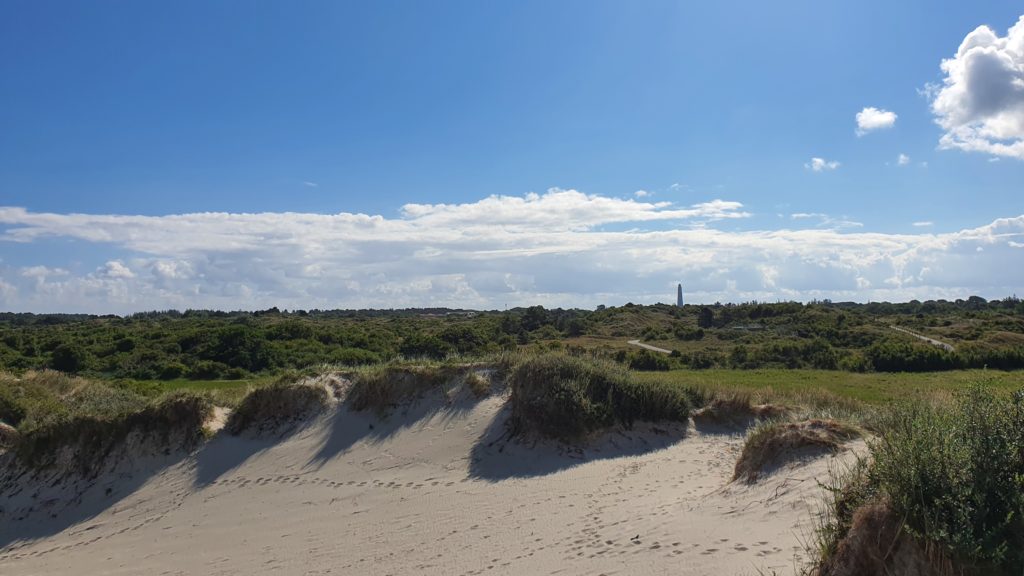
Dune Area at Schiermonnikoog Island © Esther Bossink, EUROPARC
According to the Natura 2000 Schiermonnikoog Management Plan, the nitrogen emissions from agriculture on the vulnerable dunes of Schiermonnikoog are too high. The Dutch government has taken measures by issuing a nitrogen legislation that will mean drastic changes for the agricultural sector. Initially, the province planned to buy farmers out.
As former EUROPARC Intern Lisanne Kruiswijk mentions in her report “From production and protection paradigms to a landscape approach”, the farmers opposed to this idea. Instead, they came up with a collaborative plan. A solution through which the seven dairy farmers of the island would implement nature-promoting measures, including a voluntary decline in the number of cows by no less than 35%.
The pillars of the project
The main goal of the project is the realization of biodiverse agriculture on the island. Together with Natuurmonumenten and other parties, the dairy farmers have drawn up a joint target for 2030. The three pillars on which the project stands are:
1. The realization of biodiverse agriculture on the island: Measures will be implemented to make agriculture on the island more biodiverse, such as strip cultivation, healthier soil life and a substantial reduction in livestock.
2. Producing and selling own dairy products from the Island: The loss of income due to the downsizing of the livestock of cows will be compensated by the creation of a cheese factory on the island, and selling island cheese products.
3. Residual flows: The farmers take care of the residual flows that agricultural production entails. For example, farmers are investigating how best to deal with matters such as:
- Grass clippings from the salt marsh
- Verge clippings
- Cleaning the locks
- Whey from future cheese production
- Solid manure
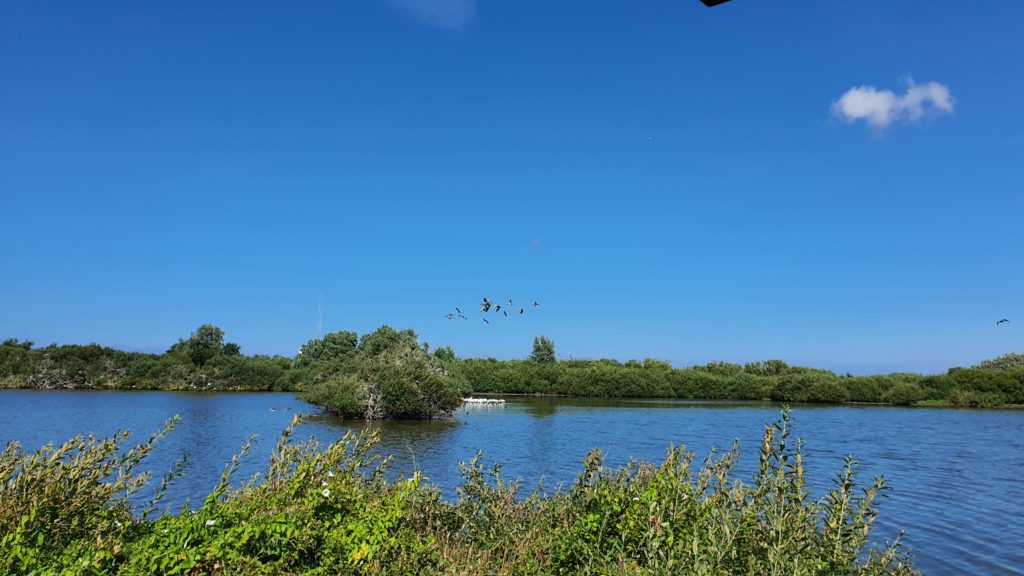
Westerplas at Schiermonnikoog, an important resting place for birds © Esther Bossink, EUROPARC.
The project is financially supported partially by the state, and a big push comes also from the European CAP pilot, in the framework of the agricultural European Innovation Partnership (EIP-AGRI).
Takeaways
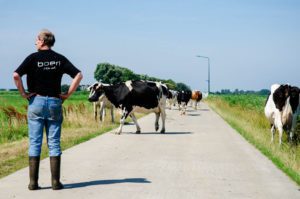
Farmer with cows in Schiermonnikoog
On Schiermonnikoog the farmers are working closely with the government and the business community, such as the Louis Bolk Institute, Ministry of Agriculture, Nature and Food Safety, Provincie Fryslân, Gemeente Schiermonnikoog, D&U Advies, Rabobank, Natuurmonumenten and FrieslandCampina.
Cooperation and collaboration are key to protecting both farmers’ and nature’s interests, and in this case, the location and setup of the island, where stakeholders are highly dependent on one another, played a significant role.
The way forward
This is a great example of a collaborative approach that could be implemented elsewhere. Whilst, there are still roadblocks to tackle, the work on Schiermonnikoog can be seen as “flagship” project on collaboration between farmers, nature managers, private companies and governmental institutions. It reminds us once again that
Alone you go faster, together you go further
Read the full case study here.
EUROPARC’s family keeps growing…check out our new members!
Get to know these 4 new members from Bulgaria, Croatia, Spain, and Switzerland who recently joined the EUROPARC network. Welcome!
BULGARIA
National Protected Areas Control Agency
This new organization was created to assist government institutions and NGO’s in providing active control and monitoring of Bulgaria’s Protected Areas, biodiversity, and ensuring the sustainable use of natural resources. The agency trains mountain rangers and mountain patrols and runs a big training facility in the Balkan Mountains near Sofia, Bulgaria.
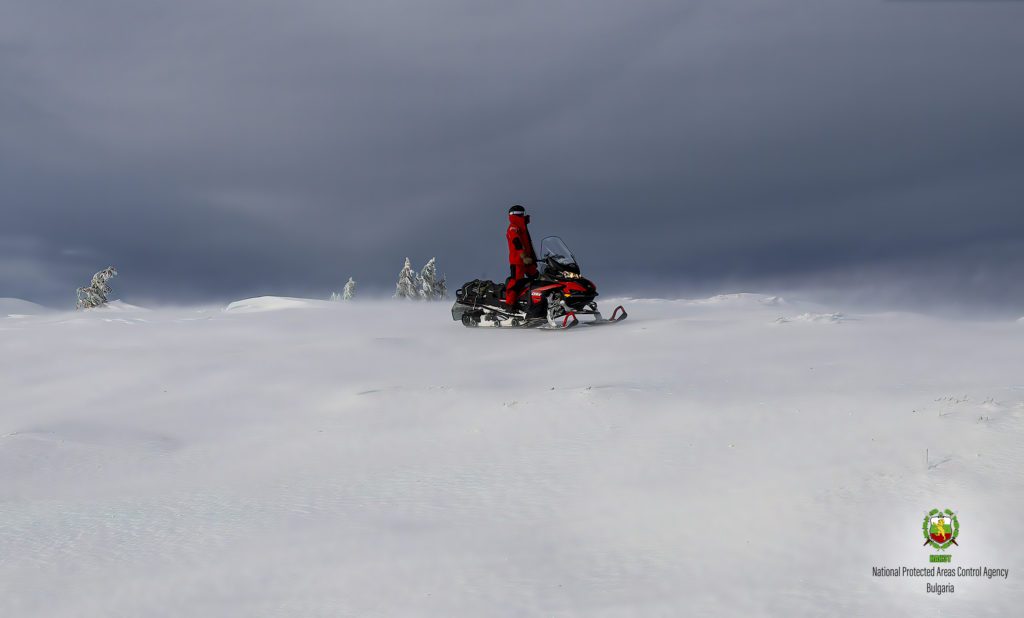
@Nikolai Zlatkov. Mountain ranger on winter patrol, on the main Balkan ridge, 2200 meters altitude, “Zapadna Starat Planina” Protected Area, Bulgaria.
CROATIA
Public Institution Nature of Šibenik – Knin County
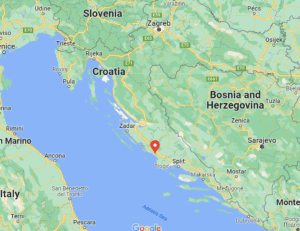
Institution location
The Public Institution Nature of the Šibenik-Knin County was established in 2007.
The primary objective of the organisation is to protect, maintain and preserve the authenticity of the natural environment and to ensure the sustainable use of natural and cultural goods in six designated sites, one nature monument and nearly sixty Natura 2000 areas. In its management area, there is also St Nicholas’ Fortress, a cultural and historical monument under UNESCO protection.
These areas burst with diversified and unique flora and fauna as well as exceptional geomorphological heritage.
SPAIN
Starlight Stellar Park Camino Barranco de Badajoz

Park location
The Parque Estelar Starlight Camino Barranco de Badajoz is located within the Reserva Natural del Cielo y la Tierra (Heaven and Earth Nature Reserve) in the Güímar valley, Tenerife, Spain. Certified by the Starlight Foundation, it is the first astronomical park in the Canary Islands, where activities are organised to observe the night sky, lunar craters, sunspots, and astronomical events.
The Park also organises excursions to the Barranco de Badajoz and the Caserío de San Juan, with the aim to preserve the natural and cultural heritage, by raising awareness about nature, tradition, culture, and customs of our ancestors.
Our mission is to Protect, Conserve and Preserve Nature, to ensure a legacy for present and future generations and to guarantee that all of the resources we have received are returned to Nature.
SWITZERLAND
Greifensee-Foundation
As an NGO, the Greifensee Foundation is committed to the preservation and further development of the Greifensee landscape and manages the associated nature reserve on behalf of the Canton of Zurich. The rangers control and supervise compliance with the protection ordinances at Lake Greifensee and inform visitors about the Protected Area. The Greifensee Foundation also runs the Silberweide Nature Station and the Junior Ranger and Young Ranger Programme.

Der See im Sommer, Greifensee-Stiftung, Switzerland
The Greifensee is the largest Protected Area in the canton of Zurich and has been a national water and migratory bird reserve since 2009. Thanks to the undeveloped banks, reed belts, fens and reed meadows have been preserved.
Would you like to be part of the biggest network of Protected Areas in Europe?
Read all about it on this page.
